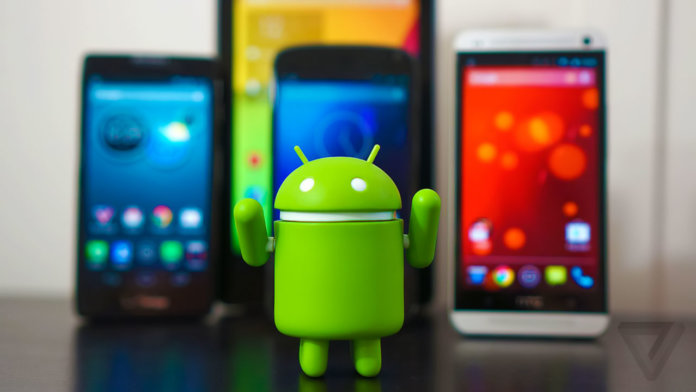The best Android smartphones of 2019 are selected from the rankings already compiled this year. We have collected different models, both in size and in functionality and price, based on data from consumer ratings, reviews and tests of reputable publications. Choose any phone you like from the list, because they are all good in their own way.
10. Xiaomi Mi 9 SE
 The average price is 27,990 rubles.
The average price is 27,990 rubles.
Characteristics:
- smartphone with Android 9.0
- support for two SIM-cards
- screen 5.97 ″, resolution 2340 × 1080
- three cameras 48 MP / 8 MP / 13 MP, autofocus
- memory 128 GB, without slot for memory cards
- 3G, 4G LTE, LTE-A, Wi-Fi, Bluetooth, NFC, GPS, GLONASS
- RAM 6 GB
- battery 3070 mAh
- weight 155 g, WxHxT 70.50 × 147.50 × 7.45 mm
This smartphone offers the best features found in the 2019 Android flagships. And it looks very stylish at the same time - thin edges and a drop-shaped notch accentuate the bright screen with an AMOLED matrix.
The main camera of the Xiaomi Mi 9 has a wide-angle lens and has performed excellently in most conditions, allowing the cheaper smartphone to compete with the models from Google and Samsung.
There are some nasty little things worth mentioning. Including the lack of waterproofing and the MIUI software that Xiaomi puts on top of Android. However, these shortcomings can be forgiven for the excellent value for money.
Pros: fits comfortably in the hands, fast Snapdragon 712 processor, fast charging.
Cons: the case slips in the hands, the average battery capacity is enough for a day of active use, there is no 3.5 mm Audio Jack.
9. Moto G7
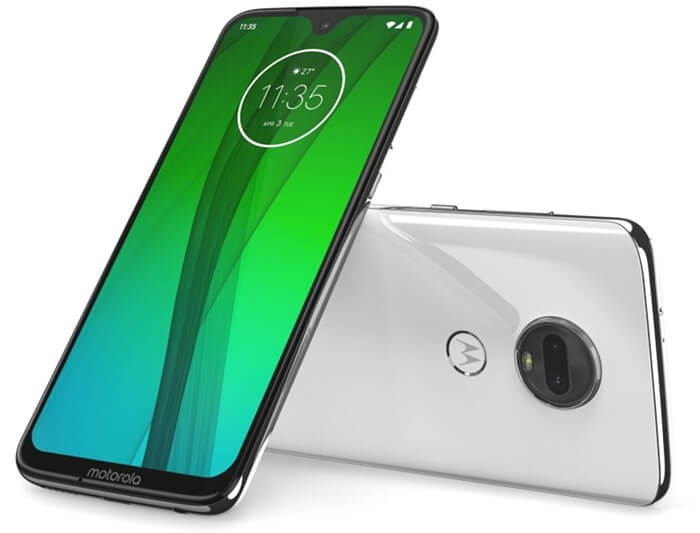 The average price is 19,990 rubles.
The average price is 19,990 rubles.
Characteristics:
- smartphone with Android 9.0
- screen 6.2 ″, resolution 2270 × 1080
- dual camera 12 MP / 5 MP, autofocus
- memory 64 GB, memory card slot
- 3G, 4G LTE, LTE-A, Wi-Fi, Bluetooth, GPS, GLONASS
- RAM 4 GB
- battery 3000 mAh
- weight 172 g, WxHxT 75.30x157x8 mm
Compared to its closest neighbors in the rating, the Moto G7 looks modest, but it will be a good choice for those who are looking for good Android smartphone up to 20 thousand rubles.
Its 6.2-inch Full HD + display has an 81 percent screen-to-body ratio. Not the best result, but considering the price of the Moto G7, it is impressive.
There is a 3,000mAh battery inside the phone, which is well optimized and will easily last all day.
The rear camera is a combination of a 12MP lens and a 5MP depth-sensing lens. The front camera is a single 8MP lens. In good lighting, the camera shots contain a lot of detail, although they are far from the dynamic range of the Google Pixel 3.
Games like PUBG and Fortnite will only run on the Moto G7 at low to medium settings due to the not-so-powerful Snapdragon 632 processor. However, this smartphone is capable of running all the apps and games that interest you.
Pros: there is water protection (from splashes, not from immersion in water), there is a 3.5 mm jack, there is a fast charge.
Cons: Plastic case, not aluminum, no NFC.
8. Sony Xperia XZ3
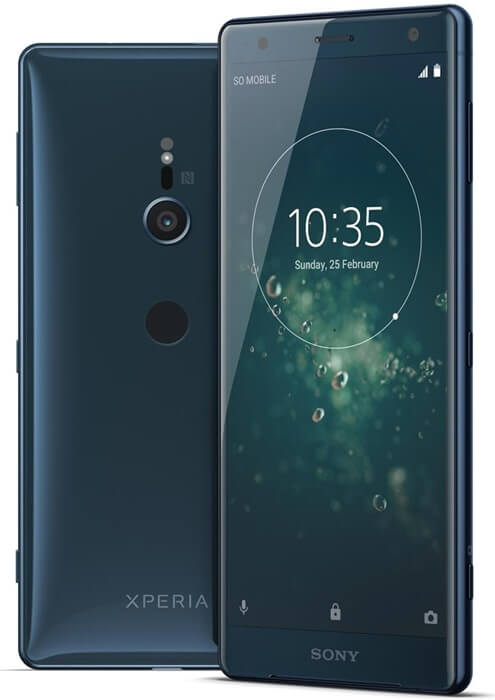 The average price is 49,990 rubles.
The average price is 49,990 rubles.
Characteristics:
- smartphone with Android 9.0
- support for two SIM-cards
- screen 6 ″, resolution 2880 × 1440
- 19 MP camera, autofocus
- memory 64 GB, memory card slot
- 3G, 4G LTE, LTE-A, Wi-Fi, Bluetooth, NFC, GPS, GLONASS
- RAM 6 GB
- battery 3330 mAh
- weight 193 g, WxHxT 73x158x9.90 mm
This is one of the best Sony smartphones currently available.It is powered by the powerful Snapdragon 845 mobile platform with 4GB of RAM, an average 3330mAh battery and a single 19MP rear camera.
The highlight of the XZ3 is the 6-inch OLED display with an impressive 537 ppi pixels per inch. That being said, the Xperia XZ3 doesn't have the weird 21: 9 aspect ratio of newer Sony models, sticking to the more traditional 18: 9 aspect ratio.
The Xperia XZ3 also does away with Sony's boxy design language, with thin bezels and nicely rounded corners more reminiscent of Samsung's design. The back panel is made of curved glass, so it fits well in the palm of your hand.
Pros: There is a 3.5mm audio jack, looks better than previous Sony phones, supports wireless and fast charging, and is water resistant (IP65 / 68).
Cons: single rear camera.
7. HUAWEI Mate 20 Pro
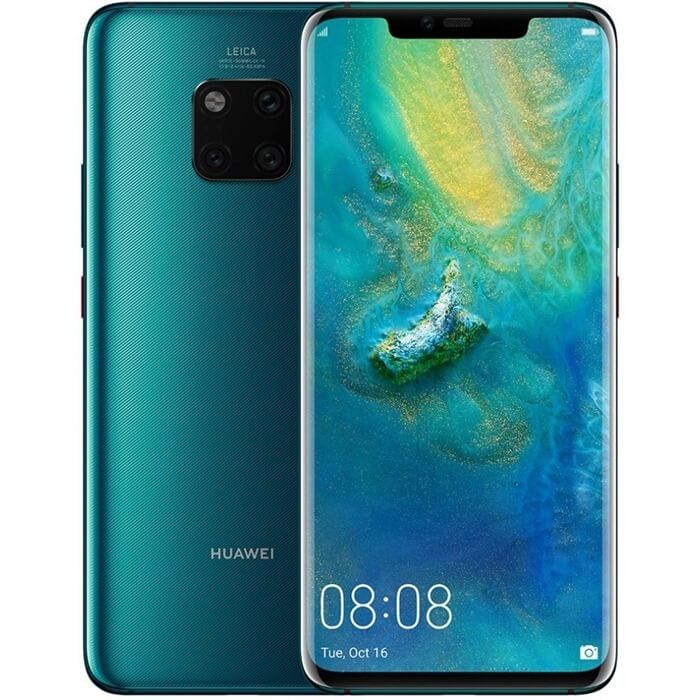 The average price is 44,990 rubles.
The average price is 44,990 rubles.
Characteristics:
- smartphone with Android 9.0
- support for two SIM-cards
- screen 6.39 ″, resolution 3120 × 1440
- three cameras 40 MP / 20 MP / 8 MP, autofocus
- memory 128 GB, memory card slot
- 3G, 4G LTE, LTE-A, Wi-Fi, Bluetooth, NFC, GPS, GLONASS
- RAM 6 GB
- battery 4200 mAh
- weight 189 g, WxHxT 72.30 × 157.80 × 8.60 mm
Representative of the chief smartphone rating 2019 in line with the latest trends in mobile devices. Its side-rounded edges immediately evoke associations with Samsung flagships, and the glass and metal back is as beautiful as it is slippery. Almost all modern smartphones “sin” with this.
The most obvious deviation from the norm compared to other Android smartphones is the placement of the camera lens on the back of this model. While the use of three lenses is becoming more common, the positioning of the lenses on the Mate 20 Pro is more interesting than the number.
Instead of a horizontal or vertical line, the three lenses of this smartphone are combined in pairs, with the camera flash as the fourth element, forming a square. In a world where flagship phones look strikingly similar, this simple change sets the HUAWEI Mate 20 Pro apart from the crowd.
And the large amount of RAM in combination with the HiSilicon Kirin 980 mobile platform makes this model ideal for the person keen on mobile games.
Pros: water resistant, can be charged via fast or wireless charging.
Cons: No 3.5mm audio jack, but an adapter is included, LG's OLED screen turns green over time. Now other, serviceable screens are being installed on this smartphone.
6. Honor View 20
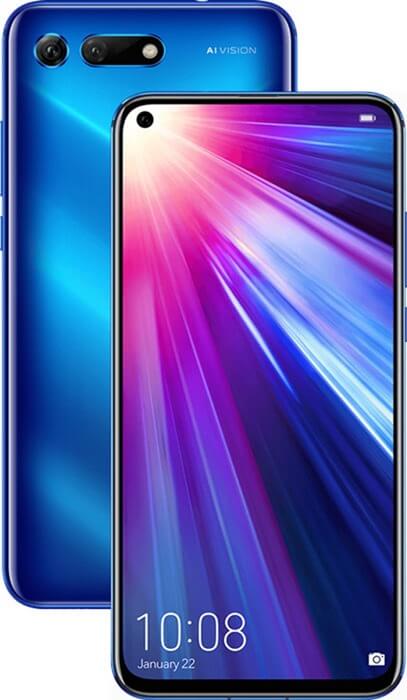 The average price is 39,990 rubles.
The average price is 39,990 rubles.
Characteristics:
- smartphone with Android 9.0
- support for two SIM-cards
- screen 6.4 ″, resolution 2310 × 1080
- dual camera 48 MP, autofocus
- memory 256 GB, without slot for memory cards
- 3G, 4G LTE, LTE-A, Wi-Fi, Bluetooth, NFC, GPS, GLONASS
- RAM 8 GB
- battery 4000 mAh
- weight 180 g, WxHxT 75.40 × 156.90 × 8.10 mm
Take the Honor View 20 out of the box and the first thing that will surprise you is the bold design of the Aurora with nano textures that generate a series of V-shaped gradients. The result is a smartphone that, when placed with the display down, really stands out from its contemporaries.
Perhaps this is the most beautiful smartphone I have ever held in my hands.
Along with the Aurora design, when using the Honor View 20, you will immediately be amazed at the screen size. It is a 6.4 "LCD with 1080 x 2310 resolution and a built-in 4.5mm hole selfie camera. Despite the screen size, the device does not feel too big and it is very comfortable to use with one hand.
At the heart of the Honor View 20 is one of the fastest mobile processors in the world, the Kirin 980, and in the GeekBench 4 single-core test, the Honor View 20 scored 3297 points, while its closest competitor, the HUAWEI Mate 20 Pro, scored 3290 points. In the multi-core test, the Mate 20 Pro scored 9714 points, while the View 20 managed to score 9727 points.
On the back of the Honor View 20 is a 48MP main camera and a 3D secondary camera for depth sensing, effects and 3D gaming control. One of its most useful features is the "night" mode, which, through a 48-megapixel lens, together with 4-in-1 superpixel technology and artificial image stabilization (AIS), allows you to take clear and detailed photos even at dusk or at night.
Pros: there is a 3.5 mm jack, there is fast charging.
Cons: no water resistance, no memory card slot.
5.Samsung Galaxy S9 Plus
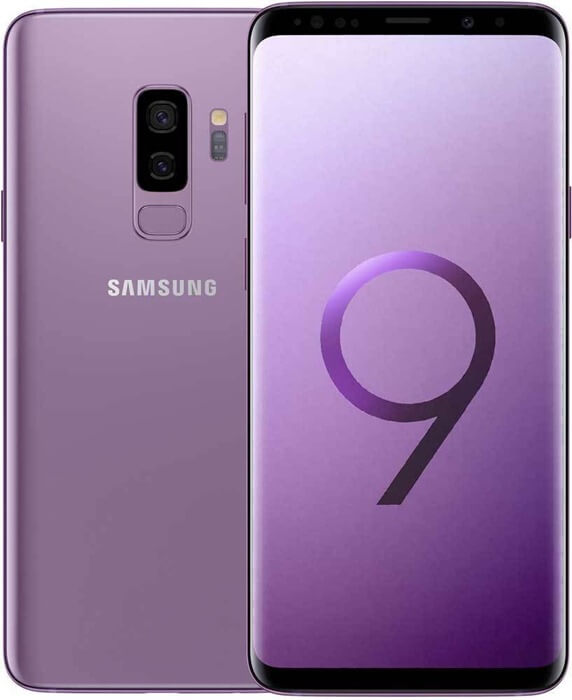 The average price is 57,008 rubles.
The average price is 57,008 rubles.
Characteristics:
- smartphone with Android 8.0
- support for two SIM-cards
- screen 6.2 ″, resolution 2960 × 1440
- dual camera 12 MP / 12 MP, autofocus
- memory 256 GB, memory card slot
- 3G, 4G LTE, LTE-A, Wi-Fi, Bluetooth, NFC, GPS, GLONASS
- RAM 6 GB
- battery 3500 mAh
- weight 189 g, WxHxT 73.80 × 158.10 × 8.50 mm
The first thing that wins over the Galaxy S9 Plus to potential buyers is its huge, elegantly rounded Quad HD Infinity display. The pixels per inch are 531 ppi - a result that beats most of the competition.
One of the biggest design flaws of the Galaxy S8 was that you always get your camera dirty when you try to use the fingerprint scanner. Samsung S9 Plus fixes this problem. The scanner has been moved slightly lower on the back of the device.
The Plus version is equipped with an additional camera in addition to a wide-angle lens that allows you to shoot more with every shot. And Optical Image Stabilization helps you get a good shot, even when your hands shake a little.
Similar to the iPhone's portrait mode, the Samsung Galaxy S9 Plus offers a setting called Live Focus that lets you adjust the blurring of the background during or after a photo.
In Russia, the Samsung Galaxy S9 Plus comes with the powerful Exynos 9810 chipset.
Pros: IP68 waterproof, 3.5 mm audio jack retained, an iris scanner. You can use fast or wireless charging to charge the battery.
Cons: lack of localization in the Bixby assistant, battery power is not enough for the whole day.
4. Xiaomi Mi Mix 3
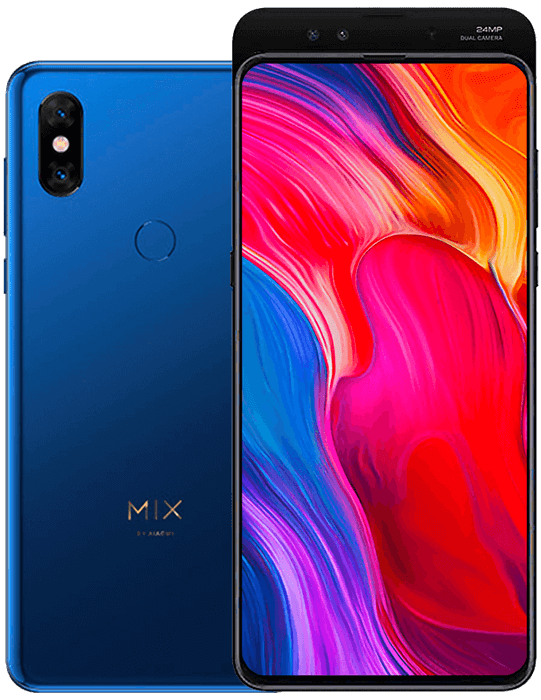 The average price is 30 390 rubles.
The average price is 30 390 rubles.
Characteristics:
- smartphone with Android 9.0
- support for two SIM-cards
- screen 6.39 ″, resolution 2340 × 1080
- dual camera 12 MP / 12 MP, autofocus
- memory 128 GB, without slot for memory cards
- 3G, 4G LTE, Wi-Fi, Bluetooth, NFC, GPS, GLONASS
- RAM 6 GB
- battery 3200 mAh
- weight 218 g, WxHxT 74.69 × 157.89 × 8.46 mm
Xiaomi is setting a precedent in the mobile market with smartphones such as the Mi Mix 3. They boast premium materials, impressive build quality, and a price you won't have to pay for pasta alone for the next six months.
The Mi Mix 3 has two key parts - a display that manually slides down to reveal the dual front-facing cameras and an attractive ceramic back. It houses a fingerprint sensor.
To the company's credit, opting for a manual pop-up mechanism instead of an automatic one (as in the Oppo Find X, for example) eliminates some of the reliability issues that come with this design choice. The mechanism is rated for an impressive 300,000 clicks.
Another strong point of the Mi Mix 3 is the 6.39-inch display with an aspect ratio of 19.5: 9, which offers an almost invisible bezel, and a slight hint of the chin. This delivers an impressive 93.4% screen-to-body ratio.
Qualcomm's Snapdragon 845 processor is a flagship of 2018 and delivers decent gaming performance, smooth multitasking, easy split-screen use and everything else you would expect from a good modern smartphone.
The dual main camera is equipped with optical stabilization, macro mode and advanced software. It takes rich photos with high levels of detail and less digital noise, even in low light.
Pros: attractive design, fast and wireless charging.
Cons: Thick and heavy body, no 3.5mm audio jack, cannot expand internal storage.
3. OnePlus 7 Pro
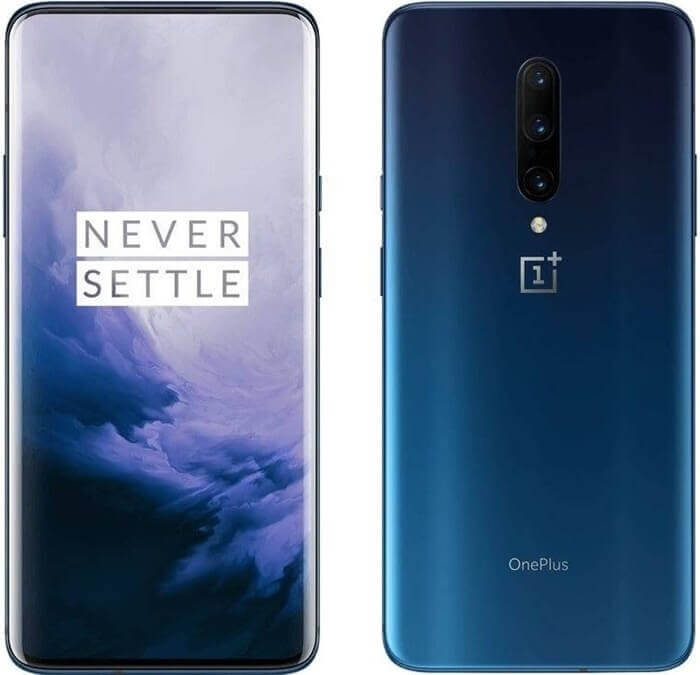 The average price is 55,790 rubles.
The average price is 55,790 rubles.
Characteristics:
- smartphone with Android 9.0
- support for two SIM-cards
- screen 6.67 ″, resolution 3120 × 1440
- three cameras 48 MP / 8 MP / 16 MP, autofocus
- memory 256 GB, without slot for memory cards
- 3G, 4G LTE, LTE-A, Wi-Fi, Bluetooth, NFC, GPS, GLONASS
- RAM 8 GB
- battery 4000 mAh
- weight 206 g, WxHxT 75.90 × 162.60 × 8.80 mm
The 6T was one of the most popular smartphones of the past year, and its successor is worthy to join the list of Android smartphones in 2019.
OnePlus has always kept a close eye on smartphone design trends, but this year it is setting the tone for other manufacturers.There are almost no bezels around the display, making the 7 Pro look amazing. And you may have noticed that the display is missing something very important: the front camera lens.
But selfie fans don't need to panic. The front camera is still there, it is just hidden from view. Inspired by phones like the Vivo Nex S, OnePlus has placed the front lens on a mechanical slide-out slider. It will pop up when you need it and hide when you don't need it.
However, it makes no sense to hide the selfie camera if the image on the screen is not very good. Thankfully, OnePlus has gone to great lengths to make the OnePlus 7 Pro's screen flawless. It is massive (6.67-inch), with an AMOLED matrix, a very long 19.5: 9 aspect ratio and a large number of pixels per inch (516 ppi).
If all this does not sound too impressive to you, then we add that the screen of this smartphone supports HDR10 + and has a refresh rate of 90 Hz, thanks to which the image will appear smoother than usual.
Under the hood is the Qualcomm Snapdragon 855, the flagship choice of 2019. It guarantees smooth performance in everyday applications as well as the best 3D games of the moment. This powerful processor is also supported by a 10-layer liquid cooling system, which should allow the device to last longer without freezing and lags.
Pros: Dual stereo speakers with Dolby Atmos, fast charging.
Cons: No waterproof, no 3.5mm jack, can't expand storage.
2. Google Pixel 3
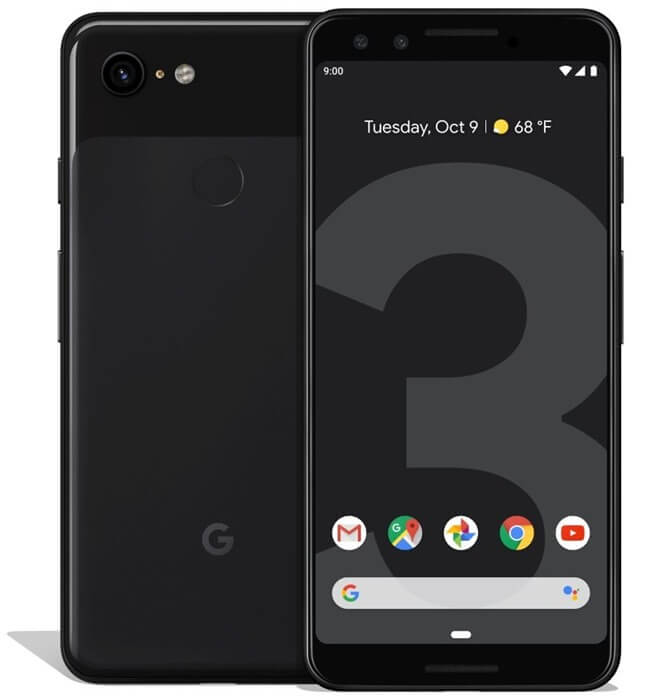 The average price is 55,190 rubles.
The average price is 55,190 rubles.
Characteristics:
- smartphone with Android 9.0
- screen 5.5 ″, resolution 2160 × 1080
- 12.20 MP camera, autofocus
- memory 128 GB, without slot for memory cards
- 3G, 4G LTE, LTE-A, Wi-Fi, Bluetooth, NFC, GPS, GLONASS
- RAM 4 GB
- battery 2915 mAh
- weight 148 g, WxHxT 68.20 × 145.60 × 7.90 mm
The Google Pixel 3 phones aren't a big step up from the Pixel 2 models, but enough to warrant a spot in the top Android smartphones of 2019.
Inside the Pixel 3, as well as its larger (in terms of size, not functionality) brother XL, you will find the Snapdragon 845 - the ex-flagship chipset, the Adreno 630 video processor and 4 GB of RAM. In terms of performance, this smartphone is slightly inferior the best flagships of 2019however, if you do not run 10,500 applications at the same time, you will hardly notice performance problems.
With the Pixel 3, Google has introduced wireless charging support for the first time. But what has remained the same is the high quality of images from the main and front cameras. Despite being a single rear lens model, it is capable of taking fantastic photos, especially with enhancements such as night mode for low light shooting. Perhaps this is the main reason why you would prefer PIxel 3.
Another reason is fast Android updates, straight from Google, without viruses or an additional shell with many unnecessary pre-installed applications.
Pros: there is water protection, thanks to its small dimensions, the smartphone is comfortable to hold in your hands, smooth and fast interface operation.
Cons: Overpriced, no 3.5mm headphone jack, not very powerful battery, can't expand storage.
1.Samsung Galaxy S10 Plus
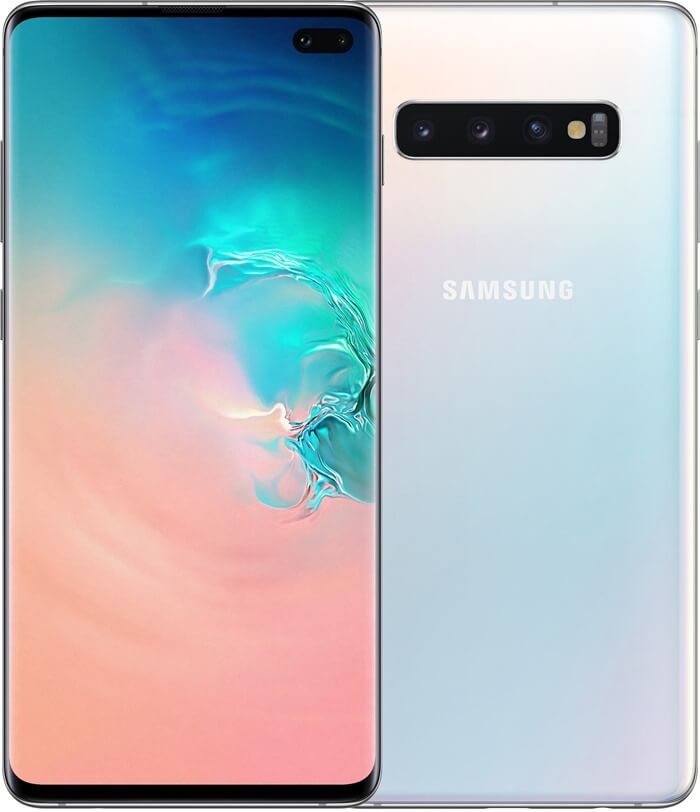 The average price is 124,990 rubles.
The average price is 124,990 rubles.
Characteristics:
- smartphone with Android 9.0
- support for two SIM-cards
- screen 6.4 ″
- three cameras 16 MP / 12 MP / 12 MP, autofocus
- memory 1024 GB, memory card slot
- 3G, 4G LTE, LTE-A, Wi-Fi, Bluetooth, NFC, GPS, GLONASS
- RAM 12 GB
- battery 4100 mAh
- weight 175 g, WxHxT 74.10 × 157.60 × 7.80 mm
This is the best Android smartphone of 2019. Its beautiful AMOLED display has a fairly large opening, as Samsung has installed two front cameras at once (10 MP and 8 MP). They look good in all shooting conditions except low light. Then things get more blurry as the software tries to aggressively smooth out the noise.
An ultrasonic fingerprint sensor is hidden under the glass of the display. And on the back is a wireless charger, allowing you to charge other Qi devices.
On the back of the device is a triple-lens camera that takes regular, telephoto and ultra-wide photos with a 123-degree viewing angle. Image and video quality places the S10 Plus on the list best camera phones of 2019.
The Samsung Galaxy S10 Plus is powerful enough to compete with the best gaming smartphones thanks to its top-notch specs. In the US, it ships with Qualcomm's flagship Snapdragon 855 chip, while in most other countries in the world, it comes with Samsung's own Exynos 9820 chip.
Pros: Samsung remains one of the few phone makers that hasn't given up on the 3.5mm headphone jack. The smartphone has water resistance. It has an impressive 93.1% screen-to-body ratio.
Cons: High price for the 12GB RAM version.
Android OS 9.0 (Pie) 2019 - what's new
The vast majority of smartphones in 2019 are equipped with Android 9.0 (Pie) OS. Here are some of the main differences from Android 8.0 and some older versions:
- Support for devices with a notch on the screen (monobrow, drop).
- Improved notifications with reply and hints.
- Updated interface and icon design inherited from Android Oreo - Material Design 2.0.
- System support for 2 or more smartphone cameras.
- The volume control is now on the right and by default it changes the volume of media, not calls.
- Connect up to 5 Bluetooth devices.
- Improved operating speed, optimized energy consumption.
- Excessive phone use alert.
The version of Android 10 Q has already been presented, the first devices based on it will appear by the end of 2019, traditionally it will be the new Google Pixel.

